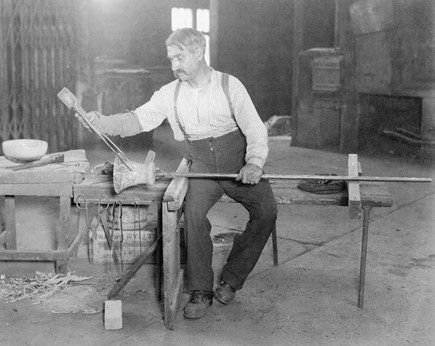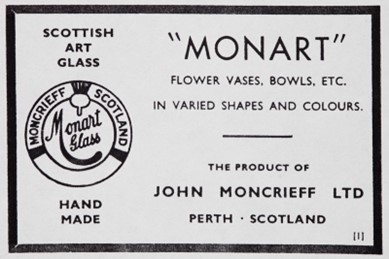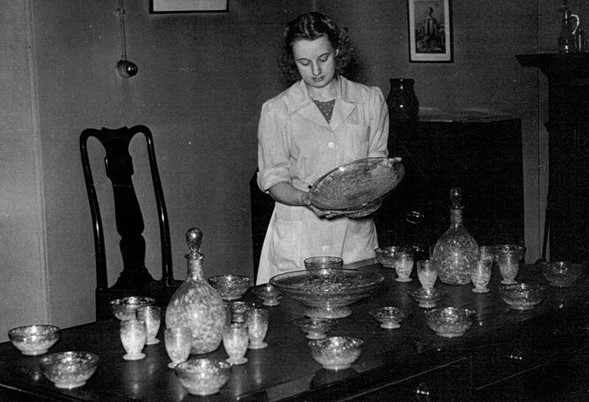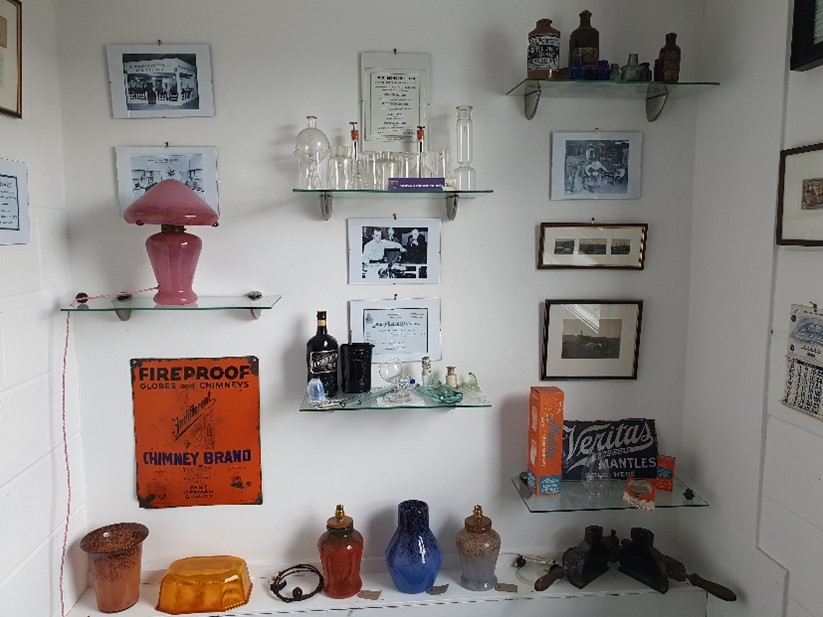
The story of Monart glass is the story of a family of Spanish glassblowers called the Ysarts.
Our story starts in 1878, when Salvador Ysart was born in Barcelona and started work in local glassworks before he was 10 years old. He went on to marry Enriqueta Moreno, and in 1909, Salvador and his wife moved with their three sons to France, where they had their fourth son. Salvador then worked at several French glassworks, including the renowned Schneider company near Paris. He was recruited from France in 1915 to work on the British war effort in Scotland, producing much needed items such as laboratory glass. In 1922 after the First World War, John Moncrieff recruited Salvador and his eldest son Paul to make laboratory glass in his glassworks in Perth, Scotland. Salvador’s other sons, Vincent, Augustine, and Antoine all joined their father’s team when they came of age.
In 1923-24, Salvador made a raffle prize for the minister of the local kirk in the Bridgend area of Perth, where the family was living at the time. The prize was a coloured glass vase made at Moncrieff’s, using coloured enamels he had brought with him from France. This vase was seen by John Moncrieff wife, Isabel Moncrieff, who saw an opportunity to diversify the company’s product range with the commercial potential of this piece. Isabel encouraged Salvador to develop a range of glass art which was to be later known as Monart. The name is derived from the names Moncrieff and Ysart. Monart was, in a very real sense, Ysart art, but the artistic influence of Mrs. Moncrieff was also quite considerable.
The Monart name grew from selling locally in Watson’s China Hall in Perth’s High Street to Wylie and Lochhead’s department store in Glasgow, Liberty & Co and Tiffany & Co in London, and was also exported to North America and Australia.
Before the start of each production run, Salvador and Mrs. Moncrieff would decide on the colour schemes and patterns. The coloured enamels would be ground, sieved and laid out on trays for the Ysarts to then start their work. With his four sons all completed their apprenticeships at this point, they were all working alongside their father. With each of them having a distinctive task to perform in the glassblowing team.

The Monart Glass itself was usually clear crystal glass which was blown to shape, and then rolled over a pattern made from specks of crushed fragments of coloured glass – known as enamels – and sometimes also aventurine. The whole piece was then cased in clear crystal. Most Monart Glass shapes were vases, however they also made fruit bowls, bottles with stoppers, jugs and even lamps

Though Monart was never more than an artistic sideline to the company’s main product – the manufacture of heat-resistant industrial and laboratory glass – Monart was still considered a great success. It was also noted that no other glassblowers were allowed to make Monart, it was exclusively Salvador and his sons. The family kept their secret close.
Production of Monart continued until 1939 when the Second World War disrupted all glass art production.
When the war ended in 1945, the production of Monart was not immediately resumed. Moncrieff was reluctant to restart production as it was a time of severe uncertainty and rationing, a place where glass art did not belong. Moncrieff’s was also at full production making its industrial glassware, so they needed all labour to fulfill orders.
Salvador and two of his sons left Moncrieff's in 1946. They started up their own glassworks, which they originally named Ysart Brothers Glass, however it soon changed to Vasart Glass. Here they made a competing line of very similar glass products to the Monart pieces they had made at Moncrieff’s Glassworks. Paul Ysart however stayed on at Moncrieff’s, and Monart Glass production eventually recommenced in 1947. The incentive to restart production was provided by the marriage of Princess Elizabeth and Prince Philip of Greece. It is tradition for each city in Britain and the Commonwealth to present the royal couple with gifts of prestigious local products. The gifts from the City of Perth were to include a presentation set of Monart Glassware.

Production of Monart continued at Moncrieff for another 14 years until 1961, but on a much smaller scale than before the war. The colours used were also paler, as fashion tastes had changed and it became much more difficult to obtain the bold pre-war colours.
Paul developed a Monart line of paperweights during this time, and when Moncrieff closed its art glass workshop in 1961, they agreed to let Paul continue to produce his paperweights which he had become renown for. However, he left shortly afterwards to work for Caithness Glass in 1962.
In 1965, Vasart Glass was bought over by Teacher’s Whisky, and renamed to Strathearn Glass. Strathearn Glass continued to make the same style of vases, bowls, and lamps as Vasart and Monart. However, the main attraction for the new owners, Teacher’s Whisky, was a series of ashtrays made from squashed glass whisky bottles.
Today, the company John Moncrieff still lives on under the direction of a former employee. Relocated to Kinross, just outside of Perth, we have created for ourselves a little museum in our reception about our company’s rich history. Included in this collection is a range of industrial glass produced back then, as well as the ashtrays made from squashed bottles. Not only this, but we have several pieces of Monart, Vasart and Strathearn glass available for purchase.

